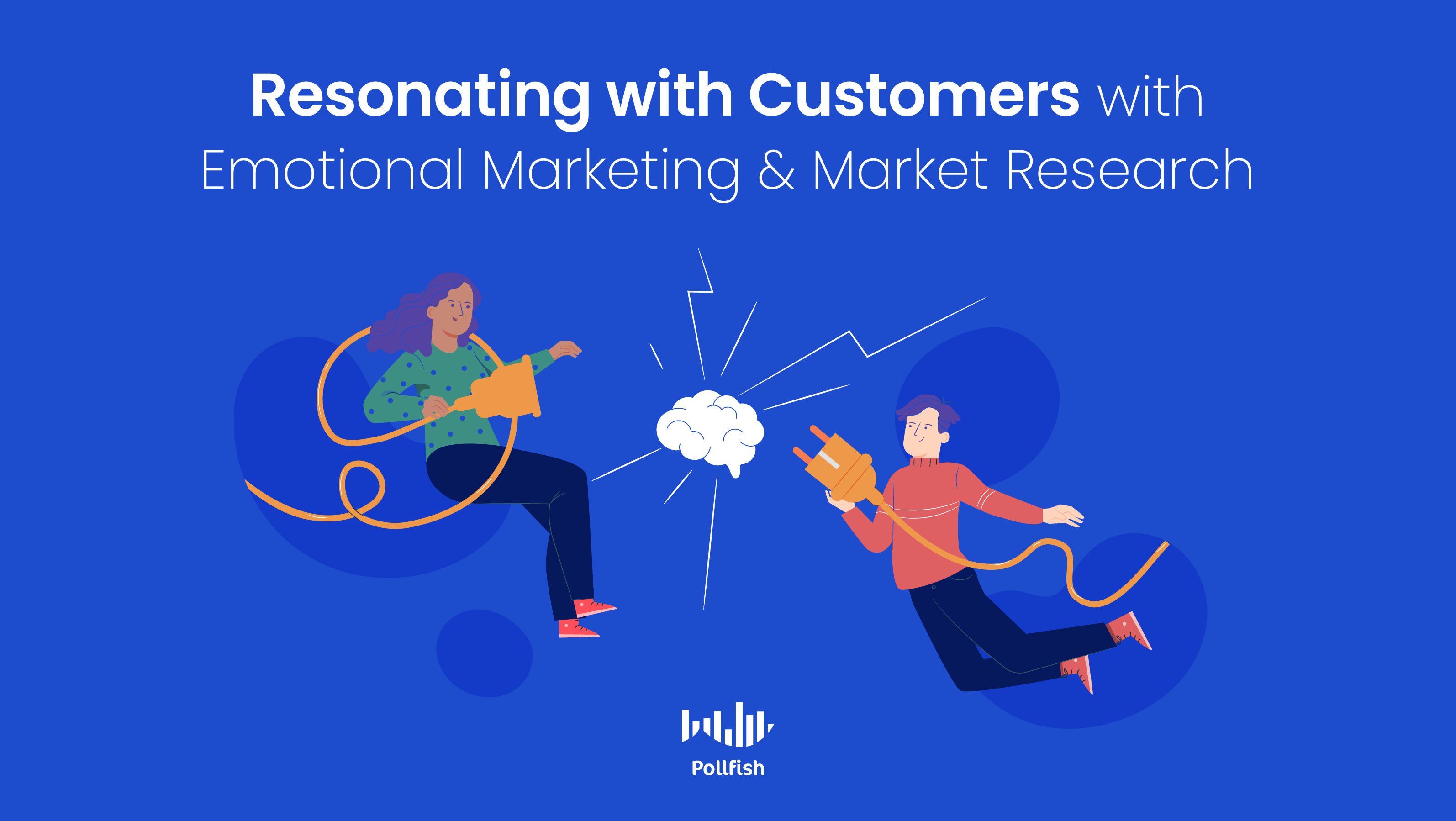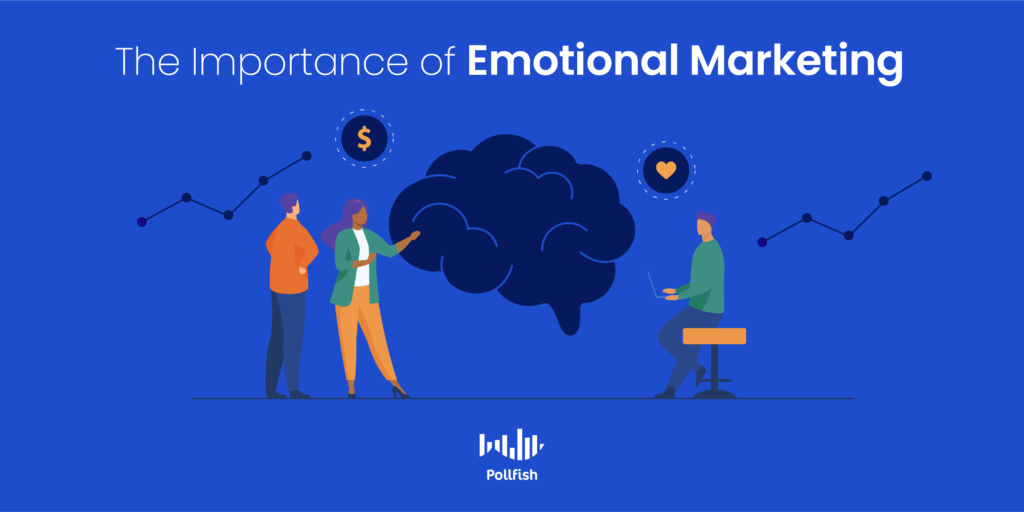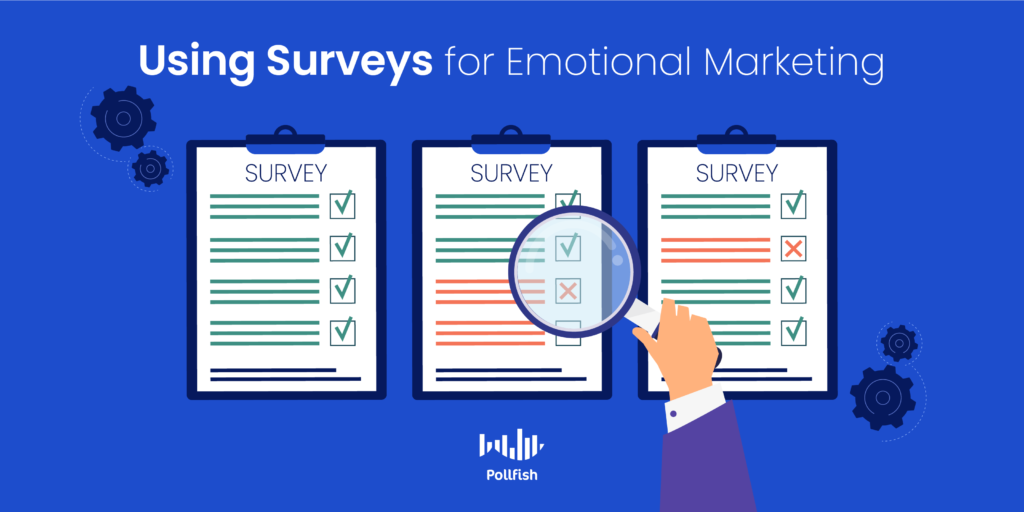Using Market Research with Emotional Marketing to Resonate with Customers

Emotional marketing is a useful tactic to employ for a number of reasons. No matter how rational a consumer may be, emotions always have sway, as people are emotional beings that base many of their decisions on how they feel at a particular time.
Emotional marketing connects audiences with brands in a personal and human way and has the power to associate brands, their products and campaigns with distinct feelings.
As new media channels, devices, and platforms emerge, they provide additional avenues for brands to partake in emotional marketing, which is proven to be effective for various purposes. Firstly, 70% of emotionally engaged consumers spend up to two times or more on brands, as opposed to the less than half (49%) of consumers with low emotional engagement.
Additionally, marketing messaging that is purely emotional performs twice as well as rational content (31% vs. 16%). It is evident that this kind of marketing engages customers and produces key results.
This article explains emotional marketing, its importance, how market research works alongside it and how to use surveys when building an emotionally bent campaign.
Understanding Emotional Marketing
Emotional marketing refers to marketing messages and campaigns that primarily use emotion to make a business’s target market aware of the business and influence the target market to buy, remember and share the business and its offerings.
This kind of marketing tactic is typically used to evoke a single emotion that elicits a response, particularly one that prompts decision-making, to help businesses achieve their desired result from their customers. It can also use multiple emotions, especially if brands are working on a set of marketing messages and advertisements.
Emotional marketing addresses the audience’s feelings, values and pain points so that brands can better connect with their target market and even form customer loyalty.
This is because brand loyalty springs from behavioral, rational and emotional loyalty; emotional marketing works by tapping into the latter. Emotional loyalty entails customers who are emotionally engaged, feel delighted by a brand, would recommend the brand and even advocate for it.
As such, emotionally engaged consumers hold a great deal of value for businesses, as they are inclined to not simply buy more, as aforementioned in the intro, but to help brands keep their customers, therefore increasing their customer retention rate.
The Importance of Emotional Marketing

Emotional marketing carries significant weight, as emotions play a major role in decision-making, given that 95% of cognition resides in the emotional side of the brain.
82% of customers with high emotional engagement always buy from the brand they are loyal to during their purchasing decisions. As such, it is no wonder that consumers who are emotionally engaged spend twice more on brands (see statistic in the intro).
At times, the emotional response to an ad or marketing message influences consumers to buy more so than the content of the ad itself.
When businesses use emotional marketing strategies correctly, they differentiate themselves from other brands. It is generally key to stand out from the crowd, but more so when marketing to an audience, as people are inundated with thousands of marketing messages every day.
Brands should thus consider the following: out of the thousands of ads consumers are flooded with daily — whether on billboards, emails, websites, social media, etc. — how many of these messages actually resonate with them?
Given that most of the advertisements and other marketing messages that consumers see on a daily basis will not live to be more than an afterthought, brands should seek to stand out as much as possible in their marketing efforts.
Emotional marketing allows brands to achieve this goal, as messages that trigger emotions are not disposed to be ignored nor easily forgotten. Rather, they stir consumers into action and can resonate with them for years to come, depending on the degree of emotion they set off.
Aside from triggering emotions that incite action and deliver unforgettable memories, emotional marketing also allows brands to engage in storytelling, thereby forging connections with their target market. However, to have the correct impact on an audience, brands will need to assure that their campaign is honest and authentic.
Additionally, when businesses relay their identity and vision properly, it makes emotional marketing simple, as the emotional tone of an advertisement will make more sense.
Finally, aside from connecting consumers with a brand, resonating with them and inciting them to buy more from a particular brand, emotional marketing helps create customer advocacy. In this form of heightened customer loyalty, customers advocate on behalf of a brand for free, such as on social media, in forums, review sites or by giving word-of-mouth recommendations. Brands must first establish such a connection and state of loyalty and emotional marketing helps them achieve this.
The 5 Key Emotional Hooks To Use in Emotional Marketing
Marketers and market researchers can implement different emotions in their marketing campaigns.
The strongest human emotions have the best chance of success, especially when it comes to resonating with consumers. This is important because, although consumers may not buy something immediately that they discovered from an emotionally charged message, the message will still last within their minds.
This kind of remembrance is powerful, as it can enable the marketing message to live on in the consumers’ minds, eventually making them purchase, or at the very least, engage with a company.
The following explains the five emotions to use in this kind of marketing and when to use them:
- Happiness
- Everyone desires happiness and you can tap into this emotion by showing how your brand produces happiness.
- This does not have to be directly from an offering, but rather a story including your product or service.
- Anger
- Inciting anger lets customers realize that something must be done or changed to resolve an issue and achieve justice.
- For example, ads that address stereotypes, painting the narrative of a brand fighting those stereotypes whether directly or indirectly.
- Fear
- Evoke fear when it aligns with your target audience’s existing beliefs about fear with a product/service you sell. For example, marketers can use the fear of danger in their ads to promote car insurance, as accidents can occur to anyone.
- Use fear in the form of FOMO (the fear of missing out) to highlight limited-time offers, which will urge customers to buy within a certain period of time.
- Greed
- The emotion of greed comes into play, as customers want to feel that they get more for their buck.
- Marketers can design campaigns centered on major savings to elicit this emotion. They can also employ BOGO deals.
- Belonging
- This feeling is part of the mechanism used to avoid feeling alone. Strong bonds and intimacy are a part of human nature and signifies being part of a group. Brands can incorporate belongingness by forming communities (online or offline) for loyal customers to share common interests and passions.
- This also plays a role in brand equity, as it allows brands to be seen as more than simply their products.
Using Market Research Alongside Emotional Marketing

Market research can and should be used alongside emotional marketing. Market research provides a strong method to support all emotional marketing campaigns. This is because it is not enough to build an emotional marketing campaign, or any marketing campaign, off of intuition alone.
Brands will need to know what kind of imagery and messaging that their target market will be receptive to and what kind to do without. After all, it is in the best interest of all businesses to avoid offending and disturbing their target market. Upsetting consumers in such a way can cause customer attrition, which can become permanent.
Rather than using emotional marketing messages that miss the mark, or even go as far as to offend, brands should conduct market research, allowing them to understand their customers and avoid marketing pitfalls. There are two ways to go about this: secondary and primary research.
Secondary market research involves gathering and studying information that has already been researched and made available. While this is a critical early research step, the information from this research is not always relevant to a business.
Primary market research, the kind that researchers must conduct themselves, is far more relevant and granular to a business. This is because, in this kind of research, the market researchers and their businesses form all of the inquiries specific to their study.
The most apt means of conducting primary market research is through online surveys. These tools grant researchers full control of their study, facilitating who is qualified to participate, the questionnaire, the visualizations of the results and much more, depending on the online survey platform.
How to Create a Survey for Emotional Marketing Campaigns
There are numerous ways to prepare and test an emotionally-driven marketing campaign. This includes gauging customers’ emotions towards a brand in general, if brands wish to see the emotions that their companies inspire. As such, surveys can test all emotional ties between customers and businesses, not merely campaigns centered on evoking an emotional response.
The following provides questions to use with different emotional marketing campaigns, along with questions for measuring all emotional affiliations, regardless of campaign type.
- Question: Considering your overall customer experience with [brand, product, service, experience], which of the following emotions do you feel when thinking about [brand, product, service, experience]?
- Campaign/Purpose: Finding all the emotions that customers associate with a brand or its specific offering
- Question Type: Multiple-choice, multiple-selection
- Answer examples: happy, satisfied, appreciated, angry, disappointed, relieved, disappointed, stressed, worried, anxious, confused, frustrated, relieved, confident
- Question: How does the following advertisement make you feel?
- Campaign/Purpose: Emotional marketing of future (or running) ads
- Question Type: Multiple-choice, multiple-selection
- Answer examples: happy, angry, scared, in want of the [product, service, experience], like I belong
- Question: I have feelings for [Brand/Product] X that I do not have for any other [Brand/Product].
- Campaign/Purpose: General emotional comparison with a competitor
- Question Type: Yes or no and open-ended
- Answer examples: Yes, no, other [explain]
- Question: What does this issue make you feel?
- Campaign/Purpose: Emotional marketing based on a topical or continuing issue
- Question Type: Multiple-choice, multiple-selection, open-ended
- Answer examples: It’s disturbing, it’s unfortunate but expected, it needs to change now, I have no feelings towards it, it confused me, I’m not sure what needs to be done about it, Other (open-ended)
- Questions: Which ad/message do you feel the strongest for? Which ad/message makes you the most [happy, sad, disturbed, satisfied, etc?]?
- Campaign/Purpose: Emotional comparison with a competitor based on a specific marketing material
- Question Type: Multiple-choice
- Answer examples: Ad 1, Ad 2, Ad 3, etc.
Resonating with Customers
Emotional marketing has the power to make marketing messages stay with their intended audience long after they’ve seen them. They spur their viewers into action, or at the very least, charge them with feelings stronger than non-emotionally-bent marketing messages.
This kind of marketing also forms emotional bonds with its target market, a critical component of building brand equity and customer loyalty. However, these kinds of messages must be executed properly in order to not offend, bore or have no emotional effect on their intended targets.
To build a strong emotional marketing campaign, businesses must observe their target market by way of market research, using both secondary and primary market research. An online survey platform is the most effective tool for conducting primary research and can make a lot of headway in emotional marketing campaigns — if brands use the correct online survey platform.
A strong online survey platform allows you to make your own survey in three easy steps, provides artificial intelligence and machine learning to stave off low-quality data, allows a wide range of filtering data options, engages users in their natural digital environments via random device engagement (RDE) sampling and much more.
When market researchers choose a platform that offers all of these capabilities, they are setting up their business for success with emotional marketing campaigns and all other kinds.
admin
Ready to Try Pollfish?
Create your survey with AI, target high-quality respondents starting at $0.95 per complete, and start getting results in just minutes in real-time. From running a simple product concept survey to managing a constant stream of trackers for dozens of clients in dozens of countries, we’ve got you.
